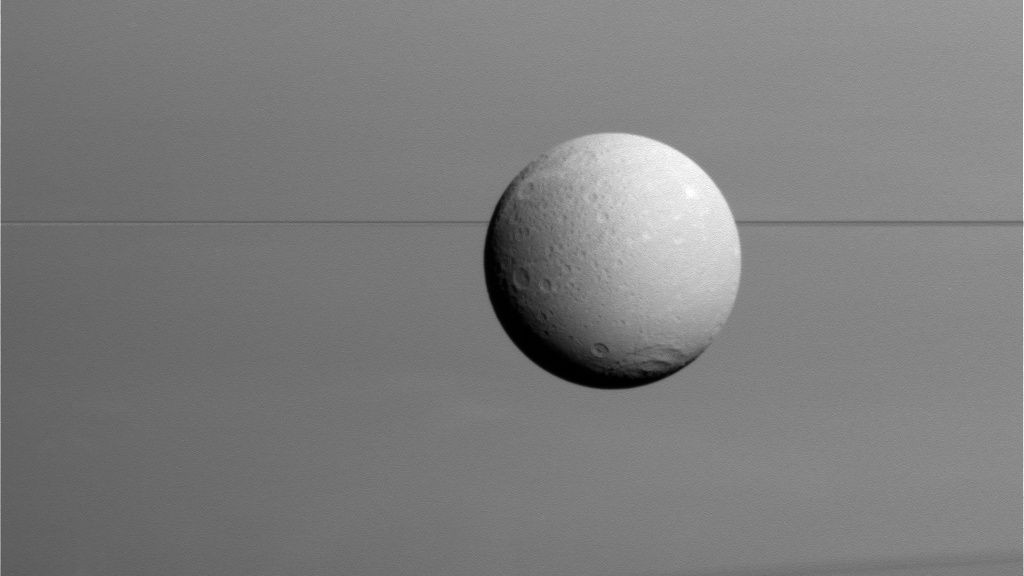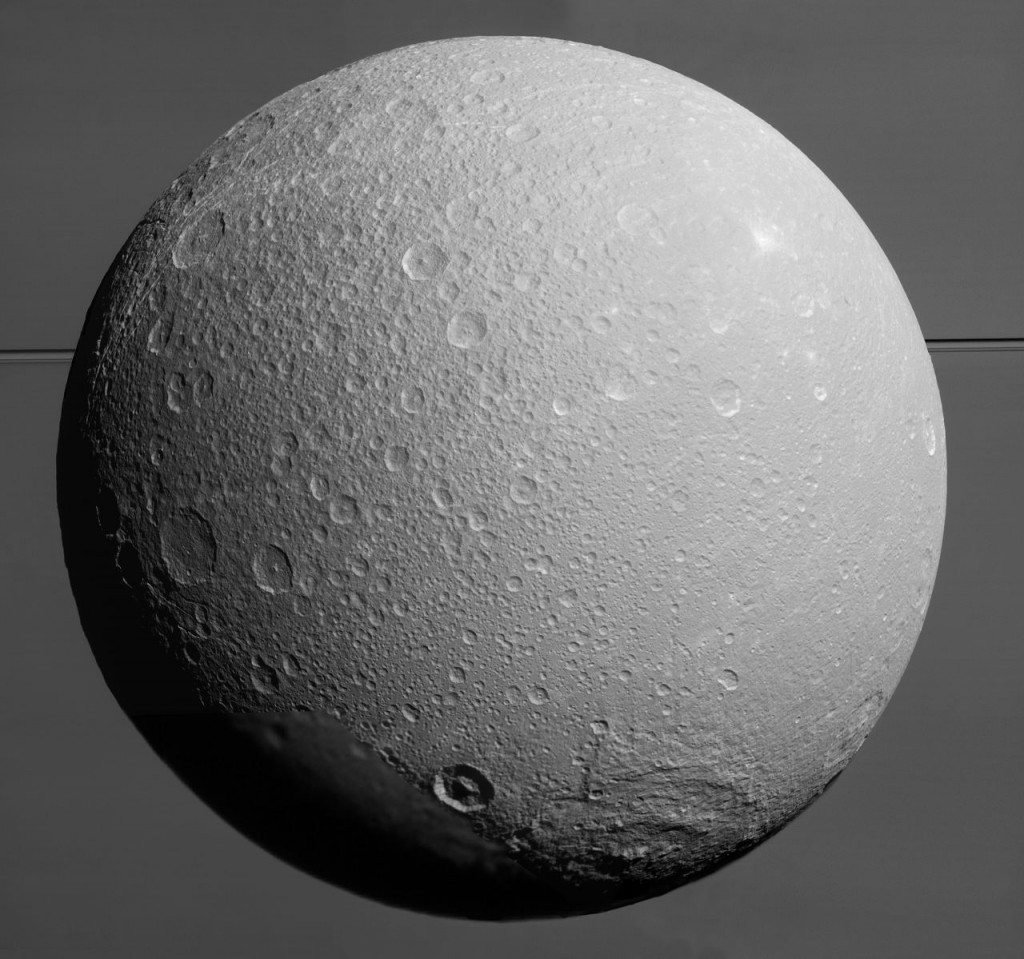The pictures sent by Cassini reveals a pockmarked landscape passing below the spacecraft. The spacecraft took the pictures while flying just 295 miles above the Dione surface. It was the fifth rendezvous of Cassini with the Saturn’s icy moon. Cassini reached the Saturn system in 2004 and has been exploring Saturn and its moons since […]
The pictures sent by Cassini reveals a pockmarked landscape passing below the spacecraft. The spacecraft took the pictures while flying just 295 miles above the Dione surface. It was the fifth rendezvous of Cassini with the Saturn’s icy moon. Cassini reached the Saturn system in 2004 and has been exploring Saturn and its moons since then. It made its closest approach ever from Dione on December 2011 when it passed just 60 miles above the moon’s surface.
Carolyn Porco, who is the head of the Cassini imaging team at the Space Science Institute, Boulder, Colorado, described the significance of the pictures sent by Cassini. He described the images as exquisite and said that it will be a very long time before mankind will see the images again of Saturn and its moon. Cassini has endeavored to one and all and proved its detractors wrong.

There are only a handful of close flyby’s the Saturn’s moon for the spacecraft now. Cassini is programmed to make three approaches over the geologically active moon Enceladus on October 14, October 28 and December 198. The spacecraft will fly just 30 miles above the surface on October 28. It will be a once in a lifetime opportunity when Cassini will take a deep dive through the moon’s plume of icy spray collecting data about the happenings below the surface.

Past December there will be some distant flybys at ranges less than 30,000 miles. The spacecraft will make two dozen rendezvous with a collection of Saturn moons which includes Aegaeon, Daphnis, Epimetheus and Telesto. The passes will give mankind the best views of the little moons of the ringed planet. The ringed planet has 62 known moons.
The Cassini-Huygens mission will be terminated in late 2017 when it will take a steep dive through the space between Saturn and its rings during its final year. The Cassini mission was launched in 1997, and it reached the Saturn system in 2004 and has been working ever since studying the ringed gas giant and its plethora of moons.
Source: NASA.

Leave a Reply